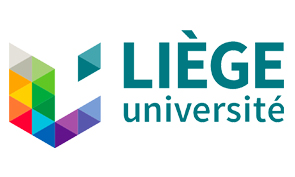
ULiège: Group of Research in Energy and ENvironment from Materials (GREEnMat)
University of Liège, Faculty of Science, Department of Chemistry
General expertise of the research group
GREEnMat – a chemistry research laboratory from the University of Liege – is specialized in the development and characterization of inorganic and/or hybrid materials in the form of powders, bulk materials or coatings for applications related to energy (new generation solar cells, Li-/Na-/K-/Zn-… ion batteries, electrochromic materials…), environment (recycling of silicon-based PV cells, recycling of batteries, recycling of metal scraps for the production of high-added value powders to be shaped by additive manufacturing) and health (excipients for dry powder inhalers, powder engineering and 3D-printing for biomedical devices,…) applications.
Particular attention is paid to compatibility of the developed materials and processes to ensure and maximize their technology transfer to industries.
We are proud to put our expertise and equipment to use in collaborative projects of all kinds, from pioneering research in academic networks to innovative applied research in academia-industry consortia.
Specific hydrogen- related expertise & research topics
GREEnMat is positioned as a player in the implementation of innovative (ceramic and/or metal) materials for the production, separation and storage of (green) hydrogen.
It has notably been working on :
- The fine tuning of doped mesoporous hematite films that can be used as photoanodes in green water splitting
- The development of immobilized metal oxide heterostructured materials with controlled architecture for enhanced photocatalytic properties – including green hydrogen production
- The customized processing of solid electrode and electrolyte materials (8Y-ZrO2,…) for water (photo)electrolysis and hydrogen production
- The (micro)structural, rheological, mechanical and/or (photo)electrochemical characterization of materials used for hydrogen production, separation and storage
Available equipment/tools
MATERIALS SYNTHESIS/SHAPING
- Powder engineering (from a few grams to kilogram)
- Two spray-drying units
- Atomization of aqueous or organic solutions or suspensions
- O2 atmosphere control (70 ppm)
- ATEX environment
- Production up to 5kg/hour
- One hydro/solvothermal synthesis reactor
- 5 liters (200 bar – 500°C)
- Two spray-drying units
- Optimized formulations
- Pilot grinding units (micron/submicron/nanometric)
- Control and characterization of the size and morphology of the powders
- Dry/aqueous grinding
- Formulation of suspensions/pastes
- Homogenization
- Stability
- Flowability
- Pilot grinding units (micron/submicron/nanometric)
- Films deposition
- Ultrasonic spray deposition automated cabin (Sonotek)
- Heating plate 500°C (up to 25 cm x 25 cm)
- Various spray nozzles
- Ultrasonic spray deposition automated cabin (Sonotek)
- Additive manufacturing
- SLA printer for ceramics (CERAMAKER 900 – 3D Ceram)
- LPBF (multi)materials printer (ACONITY 3D) for metals
- Binder-Jetting printer (DESKTOP METAL)
- Numerous furnaces for heat treatments (debinding/sintering expertise)
MATERIALS/DEVICES CHARACTERIZATION
- (Micro)structural
- Granulometry
- BET
- XRD (+ furnace 1200°C)
- Carbon analyzer
- TGA/DSC
- Electron microscopy (SEM/TEM)
- Atomic Force Microscopy (AFM)
- Spectroscopies
- Mössbauer
- UV-Vis-NIR
- Impedance (EIS)
- Specific characterizations
- Wettability
- (Photo)electrochemical properties
- Fracture, flexibility and ageing resistance (flexure, stretching indentation and abrasion resistance testing, UV-condensation chamber)
Participating in FL/B/EU funded projects with H2 related research
- INANOMEP (Innovative NANOstructured Interfaces for MEdical and Photocatalytic applications): International Research Project funded by CNRS (Institut de Chimie Physique (Université Paris-Saclay, France) & CESAM Research Unit (ULiège)); focus at GREEnMat on the optimization of the processing of electrode materials for water (photo)electrolysis and hydrogen production
Main relevant publications
-
- Metal oxide heterostructured films with controlled architecture for enhanced photocatalytic properties, S. Periyannan, PhD thesis manuscript (2019).https://orbi.uliege.be/handle/2268/238125
- Influence of ZnO Surface Modification on the Photocatalytic Performance of ZnO/NiO Thin Films, S. Periyannan, L. Manceriu, N.D. Nguyen, A. Klein, W. Jaegermann, P. Colson, C. Henrist, R. Cloots, Catalysis Letters 149 (2019) 1813.https://orbi.uliege.be/handle/2268/234774
- Influence of mesoporosity and Ti-doping in hematite photoelectrodes for water splitting, C. Toussaint, PhD thesis manuscript (2017).https://orbi.uliege.be/handle/2268/211736
- Surfactant-assisted ultrasonic spray pyrolysis of hematite mesoporous thin films, C. Henrist, C. Toussaint, J. de Vroede, D. Chatzikyriakou, J. Dewalque, P. Colson, A. Maho, R. Cloots, Microporous and Mesoporous Materials 221 (2016) 182.https://orbi.uliege.be/handle/2268/187343
- Combining Mesoporosity and Ti-doping in Hematite Films for Water Splitting, C. Toussaint, H. Le Tran, P. Colson, J. Dewalque, B. Vertruyen, B. Gilbert, N.D. Nguyen, R. Cloots, C. Henrist, J.Phys. Chem. C 119 (2015) 1642.https://orbi.uliege.be/handle/2268/178791
Contact persons
Prof. Rudi Cloots
rudi.cloots@uliege.be


